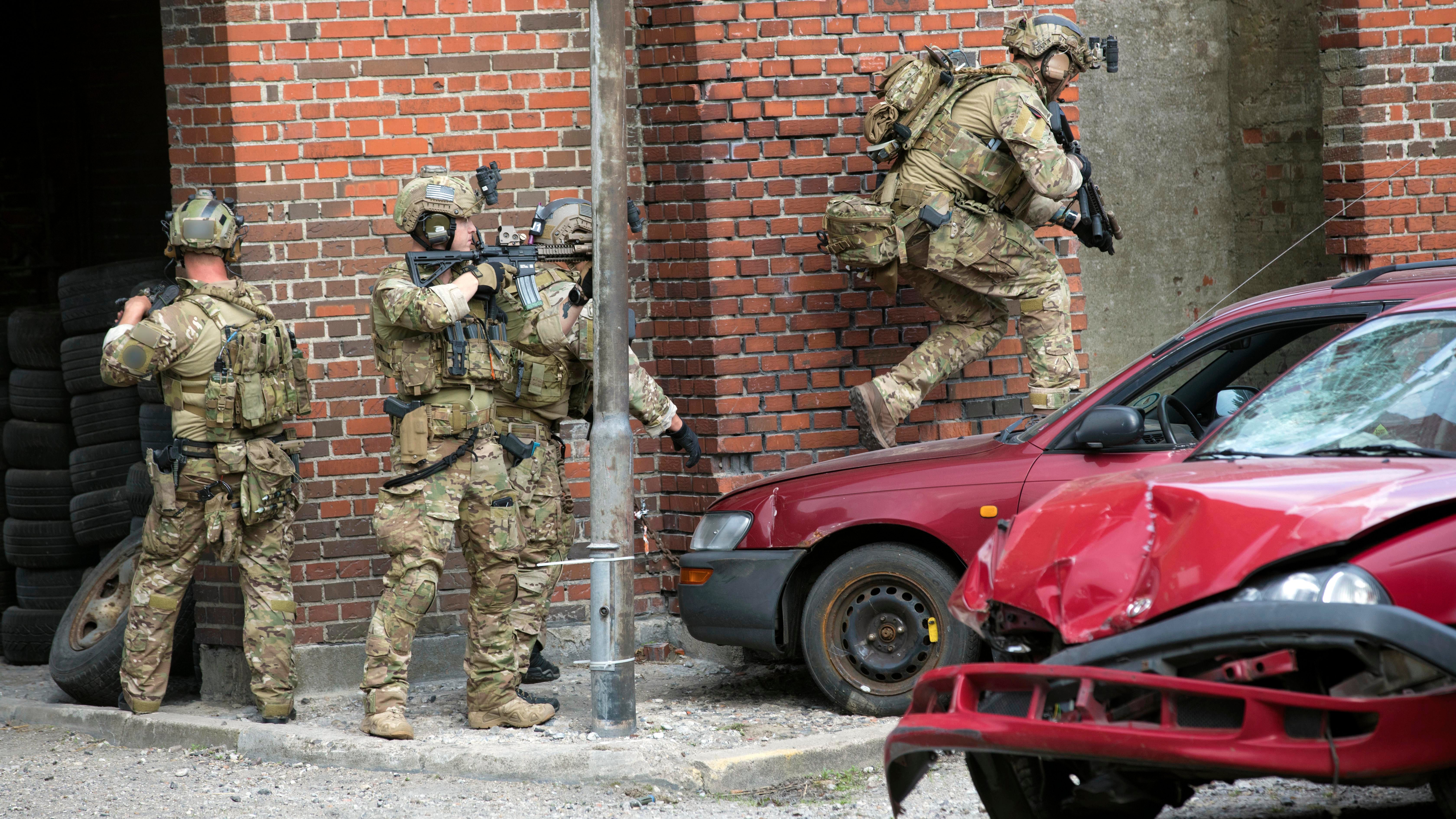Urban Operations Pose Key Challenge for Soldiers
Urban Operations Pose Key Challenge for Soldiers

Operating in an urban environment is one of the most difficult challenges facing the Army as it prepares for the next war, according to a new pamphlet from Army Training and Doctrine Command.
From recent large-scale operations in Baghdad and Mosul in Iraq and counterinsurgency missions in Kabul and Kandahar in Afghanistan, to counterterrorism operations in Paris and Mumbai, India, and humanitarian assistance missions in Asia, urban areas pose a unique challenge to ground troops, according to the pamphlet.
Because of these challenges, TRADOC Pamphlet 525-92-1: The Changing Character of Warfare: The Urban Operational Environment, aims to provide soldiers with an in-depth look at urban operations and the challenges troops may face.
Released earlier this year, the pamphlet does not seek to predict the future. Instead, “it strives to describe the future operational environment,” Lt. Gen. Ted Martin, deputy commander of TRADOC, wrote in the foreword. “It is fundamental that we understand what challenges the future operational environment will present to our leaders and other soldiers.”
Technology will be soldiers’ ally, combat proficiency will be essential, and soldiers of every rank will also play the role of diplomat, Martin wrote.
“Our soldiers will confront both nature’s raw power and enemies’ use of increasingly sophisticated technologies and tactics that will at times constrain employment of our own capabilities to maximum effect,” he wrote.
The world continues to become more urbanized, the pamphlet states, with about 60% of the world’s population estimated to live in an urban area in the next 10 to 15 years.
One of the greatest limitations in the Army’s urban training facilities is the inability to realistically replicate dense urban areas over a sufficiently large area, the pamphlet states.
Soldiers also will have to learn to contend with the enemy’s increasing ability to manipulate urban residents’ attitudes using misinformation and disinformation, according to the pamphlet.
“Meeting these challenges will demand adaptive thinking, innovative evolution of U.S. capabilities, and establishing coalitions beyond those with military and whole-of-government members alone,” the pamphlet says. “The complexity of the urban environment and its many interconnected systems offers fertile ground for innovative forms of armed conflict and competition in the coming decades.”
To read the full document, click here.

